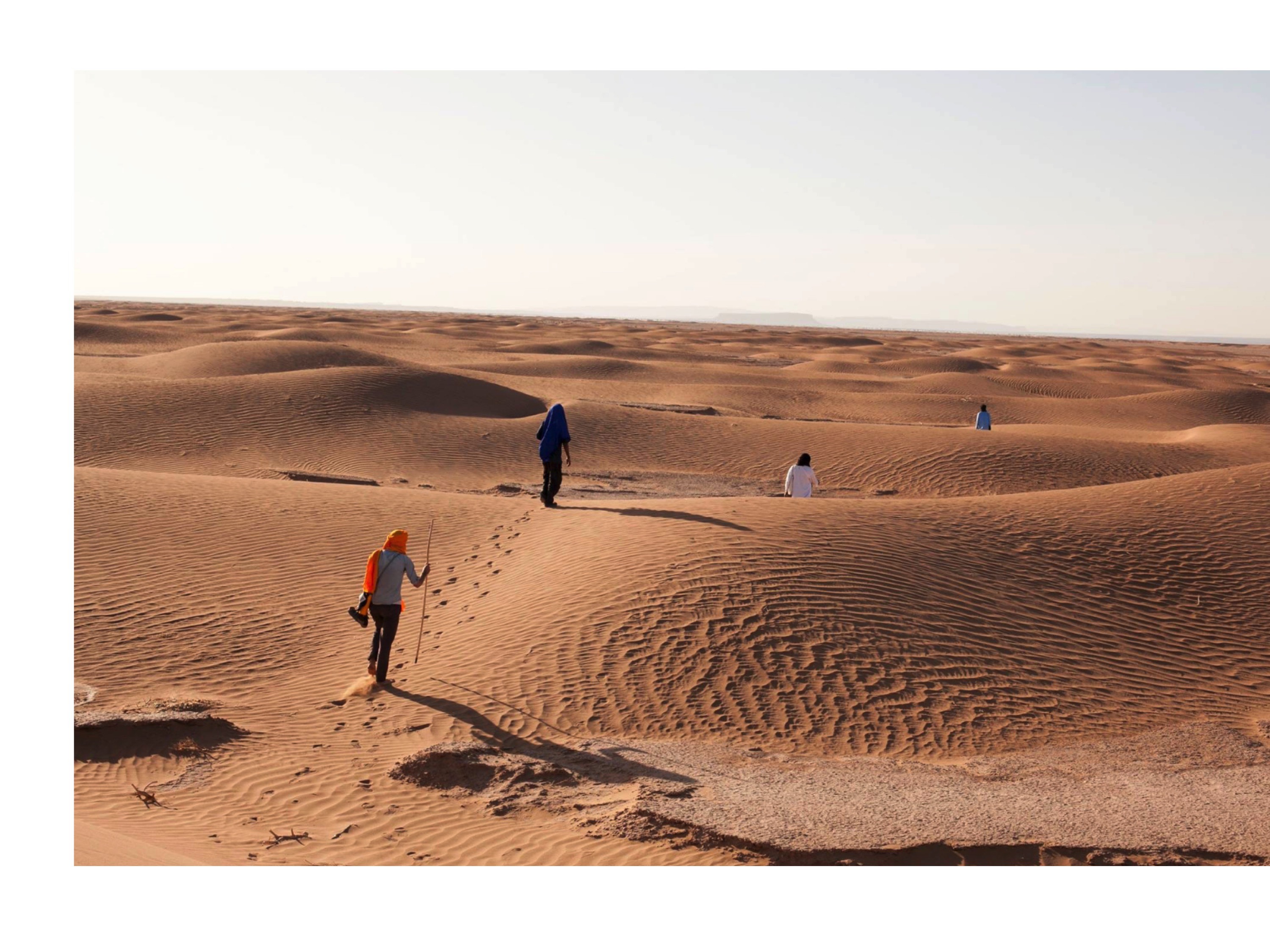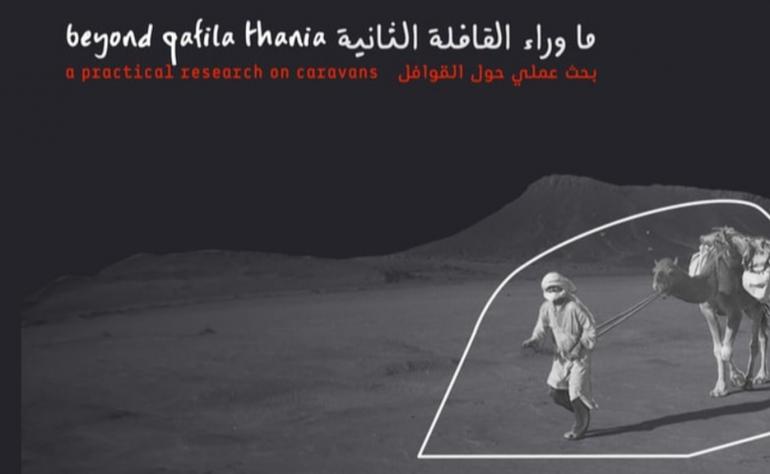Placed in between a decaying nomadic culture and its exploitation as the ultimate tourist destination, the Saharan desert continues to be a space heavily connoted with stereotypical imaginary.
Self-consciously located at the borders of this juncture, Beyond Qafila Thania brought together researchers from Sudan, Morocco, Spain, Catalonia, Italy and the Netherlands researching in architecture, sociology and the visual arts actively approaching the cultural, social and geopolitical space of the Sahara desert to trace back the stories of the old caravans and learn about its influence in current day cultures and societies. Beyond Qafila Thania facilitated an inspiring frame to exchange and research further on the participants on going projects focusing on topics such as contemporary nomad cultures and architectures, current immigration routes, history of slave trade, the concept of blackness and knowledge exchange through trans-Saharan book trade.
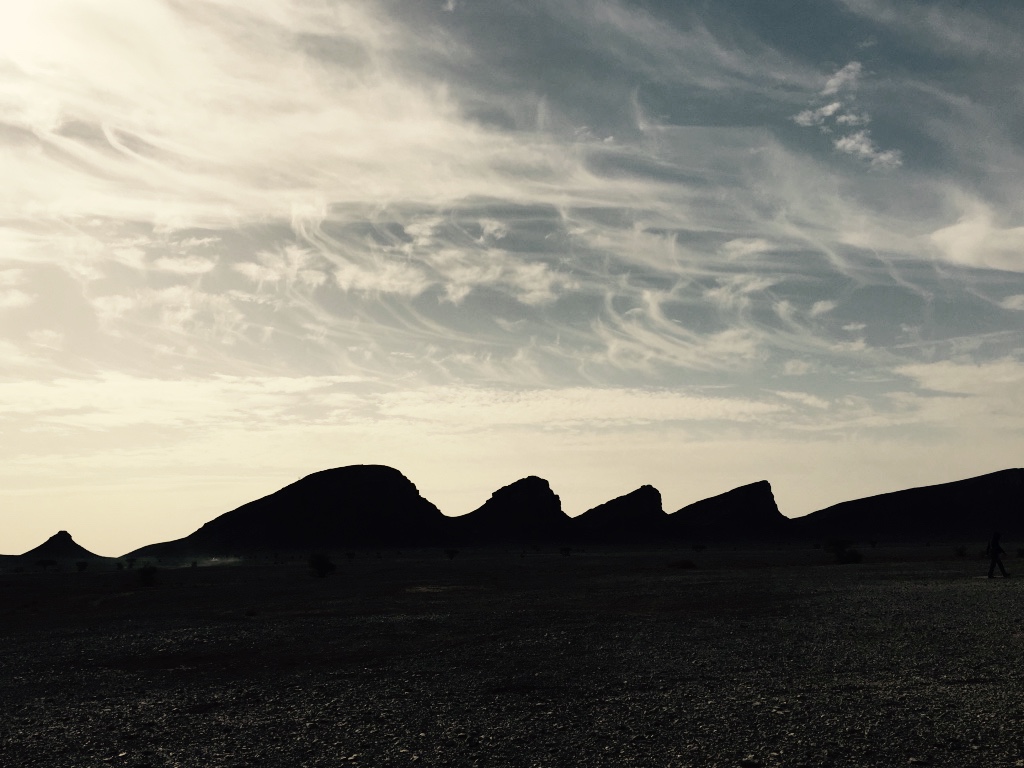
Un-learning and an-archiving
Expanding from March to December 2017, Beyond Qafila Thania is a polymorphous project encompassing research, archiving, field trips, a nomadic residency and a final public presentation. Beyond Qafila Thania proposed an approximation to the Sahara through artistic thought, embodied research and crossdisciplinary collaboration while investigating on epistemic resonances and diachronic empathies. Initiated by Marsad Drâa and CeRCCa in the context of KIBRIT and Platform HARAKAT, Beyond Qafila Thania first step was to create an archive to share and gather written, visual and audio documents reflecting upon the Sahara desert from divers research perspectives.
In order to transit from the act of gathering to processes of un-learning and an-archiving, Beyond Qafila Thania team moved from theory into practice through a field trip in southern Morocco. This one-week field trip focused on researches on the Drâa Valley, which historically constituted a crucial location in the trans-Saharan trade routes between Timbuktu and Marrakech. The field trip developed through visits to different sites with several local experts, derives and experimental documentation as well as recording of interviews and halaqah collaborative readings. The group discussed on topics such as water politics and the praxis and poiesis of caravan routes, critically exploring issues connected to slave trade, draawa social contracts, the valley political ecology, indigenous and Islamic epistemologies, colonial legacies and black radicalism.
The trip ended with the participation at the Taragalte Festival, a gathering of musicians, artisans and activist from Morocco, Algeria, Mauritania, Mali and Niger in M’Hamid, an ancient northern Sahara tribal meeting point..
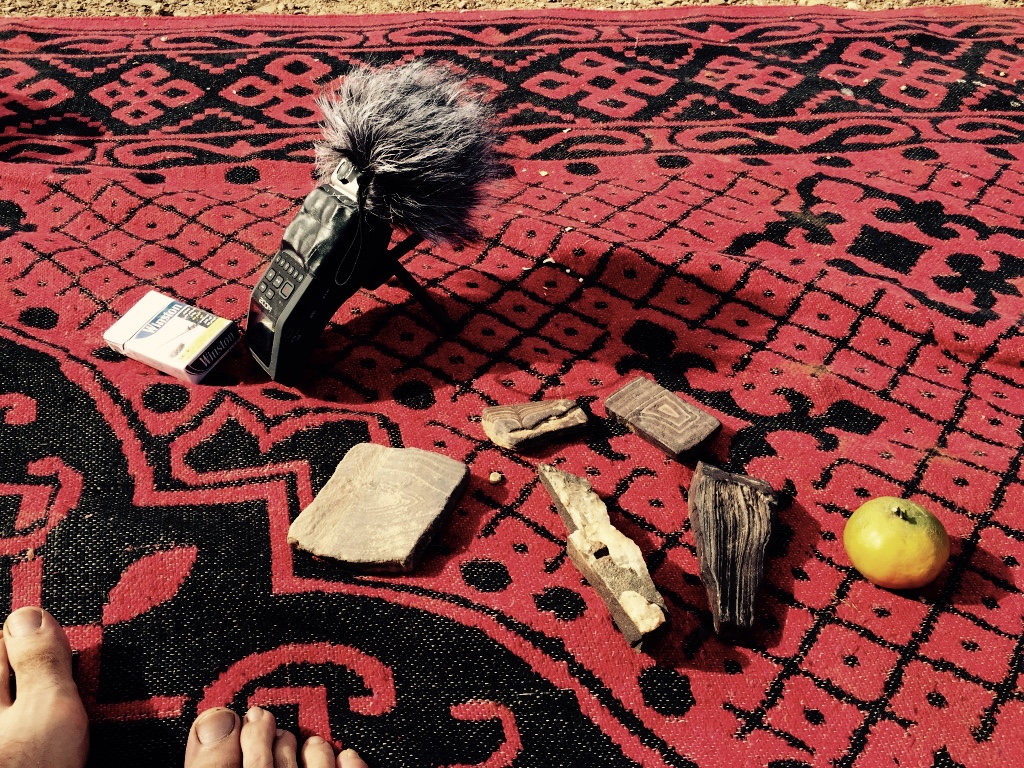
Walking as immediate and preterit empathy
A crucial aspect of the project was Beyond Qafila Thania Nomadic Residency. Lasting 10 days and walking the 200Km that separate M’hamid from Tisint the residency participants traversed the paths traced by the old trans-Saharan trade caravans with overnight stopovers in several zawiyas, qubbas or souks.
Through the Nomadic Residency, Beyond Qafila Thania interrogated affective and material approximations to the production and experience of knowledge. The practice of walking became in itself a reenactment and an exercise of immediate and preterit empathy. Taking what can be conceptualized as curatorial phenomenology, the project challenged concepts such as border, institution, hierarchy, hospitality and friendship putting in stand by conventional modes of knowledge gathering while des-centering artistic production into a space of inbetweenness, away from physical, conceptual and methodological comfort zones.
Intensity, exhaustion, confusion, silence and most importantly the impossibility of perception became characteristic of the different layers and signifiers that emerged along the journey. Walking through the different landscapes that conform the desert, traversing the lands of scarcity, abundance and exhaustion, Beyond Qafila Thania Nomadic Residency became a catalyst to understand that traces, shadows and remains are signs that precede and enhance knowledge through a constant process of unfolding and concealing.
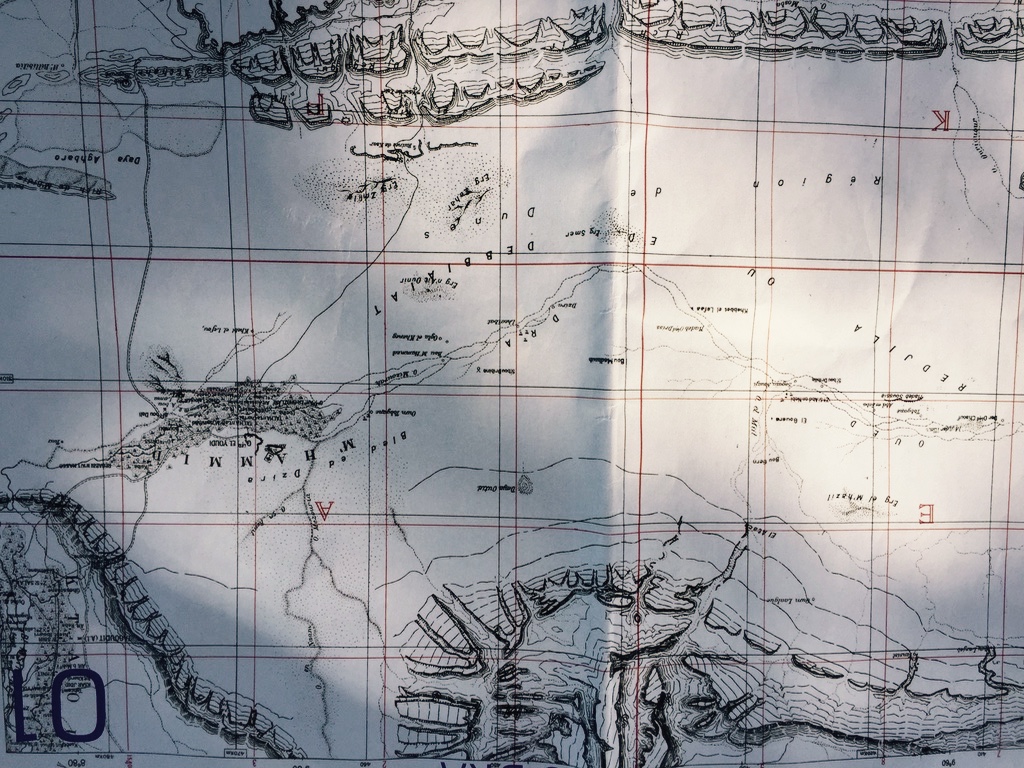
Beyond Qafila Thania has to be understood also as a way to des-center artistic production and a deconstruction of methodologies normally located in the realm of contemporary art into a space of in-betweenness away from epistemological certainties. Framed by a phenomenological approach to knowledge production the practice of walking enhanced new routes to apprehend our surrounding, our group dynamics, the self. The experience had totally unexpected outcomes and touched and reflected upon emotional, rational and spiritual realms constantly questioning our positioning in relation to what we were doing, step by step..

Beyond desistance
Beyond Qafila Thania can’t be evaluated in terms of success or failure. The relevance of the project is not truly quantifiable and its outcomes can’t be understood as an ended process. The relevance of Beyond Qafila Thania has to be seen not as much as by its strengths but through its fragilities. Through this journey, the act of curating, and so the practice of taking care of, has evolved over complex moments of intensity and contingency in which several assumptions have been put into crisis unraveling a sense of creative disorientation. Through this light, curating has become a collaborative and creative process that enforced shared awareness through direct experience. What Beyond Qafila Thania enhanced, and maybe what we can learn from it, is the adoption of curatorial phenomenology as a path and a tool to critically reflect upon different approximations to the journey, the heritage of its traditions and the erasures embedded therein.
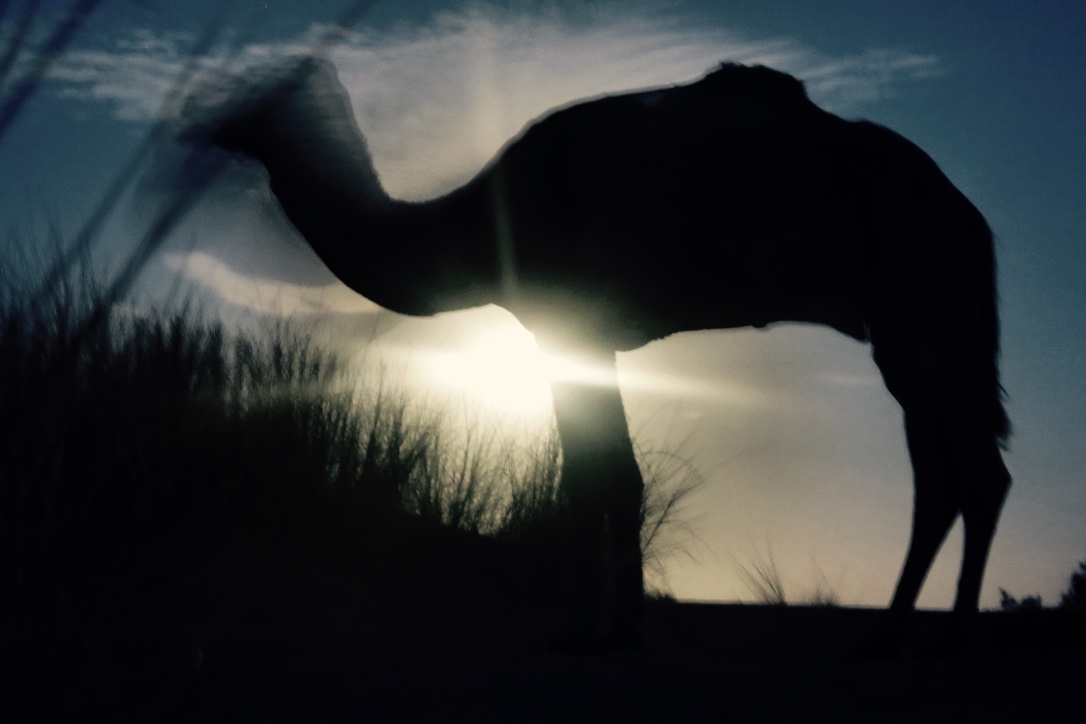
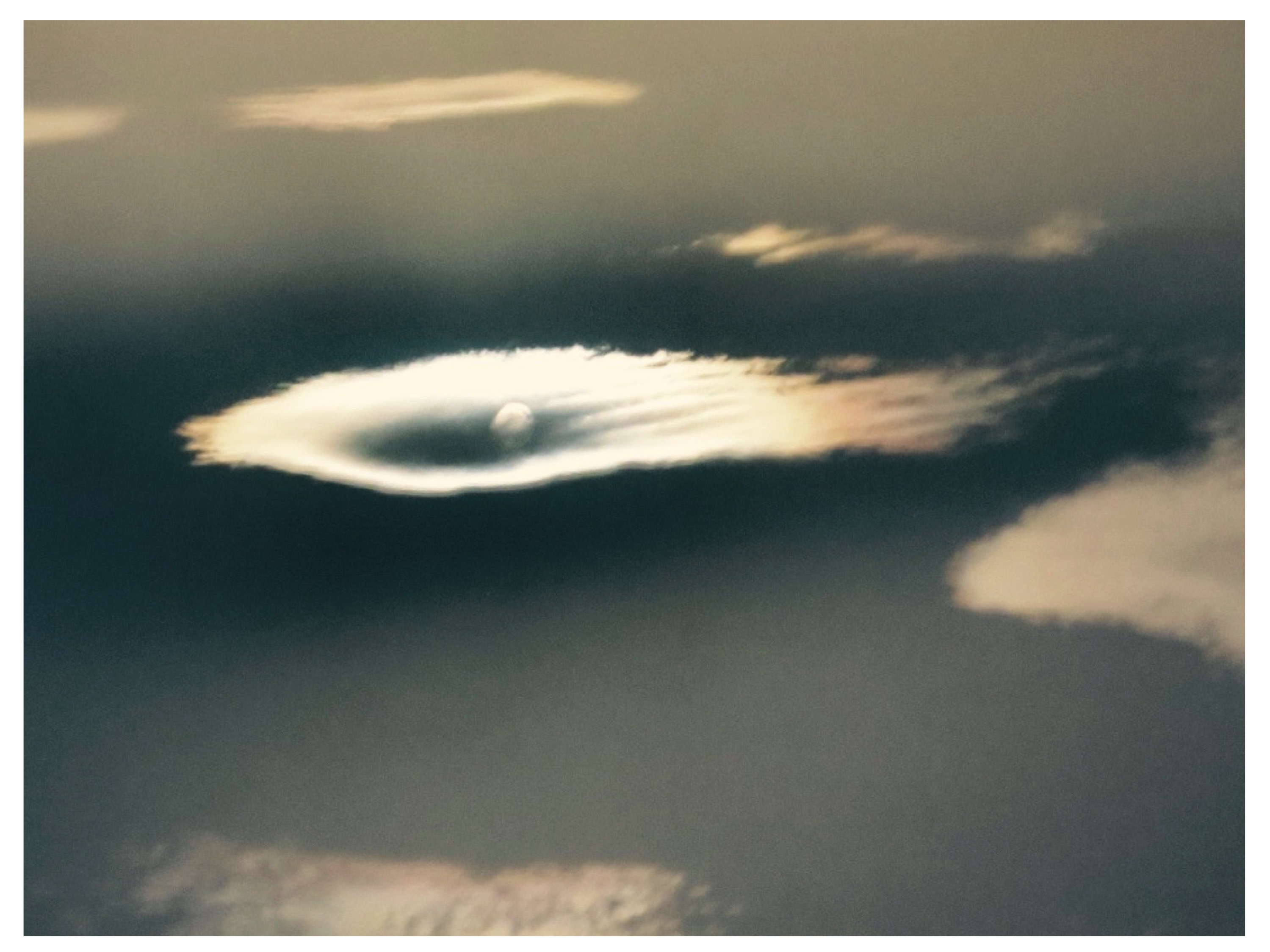
Amado Alfadni
Amado Alfadni is an Egyptian-born Sudanese artist. His childhood was composed of two environments: the Cairene street and the Sudanese home. The relationship, and sometimes tension, between the two strongly influenced his view of both cultures. The need to express this dual perspective led him to make art initially and has informed his work since. His practice discusses the relationship between the included and the excluded, identity and politics. By working with forgotten historical events and current state policies, He raises questions of power dynamics on a social and political level. His artistic practice has been driven into research and documentation of ignored historical events, especially colonial history and its re-reading from the perspective of the native. In his recent projects he focuses on the military slavery history and the Daarb el arba’en Trans-Saharan trade route linking Al Fasher (Sudan) and Asyut (Egypt).
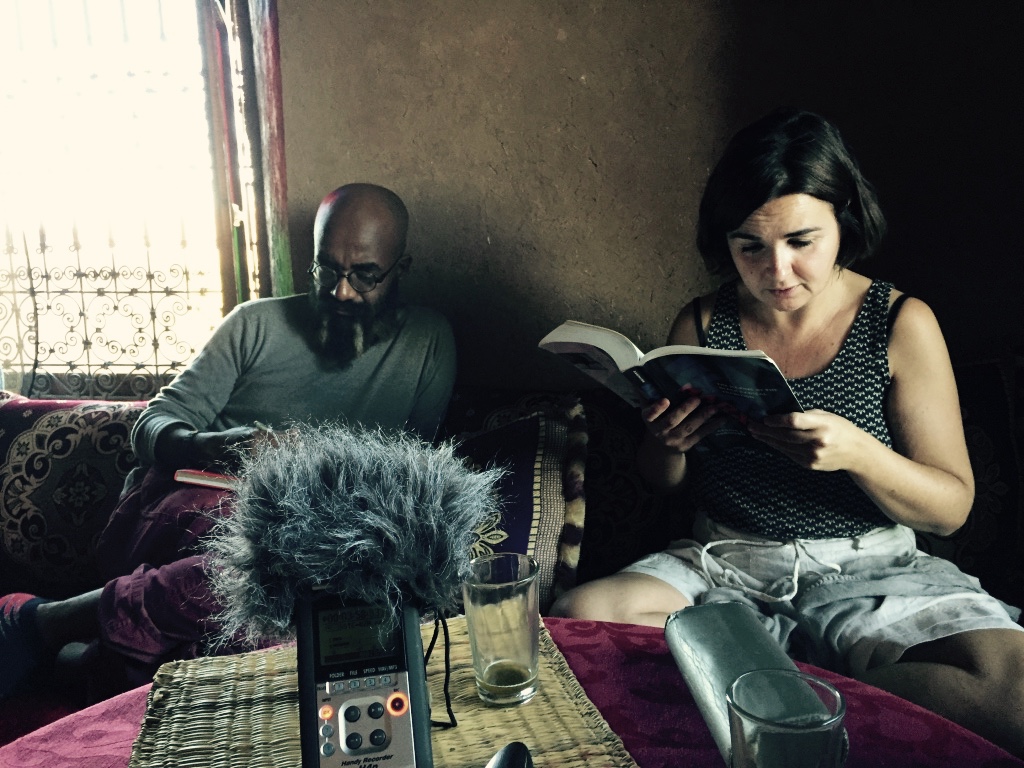
‘Untaken images’ by Amado Alfadni
Day 2.
Sidi Nagi’s shrine. It was laying on the far left of the long extended grave like an old snake that sits and dwells in his place. A woman-shaped tree trunk, the limbs were painted in a color of green mixed with black magic spells, shaped like hooves. In front of it, a piece of red velvet cloth seemed like it belonged to a woman, and remains of tobacco mixed with hash lay on a ceramic tray.

By Amado Alfadni
Day 3.
Started to feel a lump on my right leg, I thought it was because of the long walks we had to take, he was following us above the dunes, no one noticed him but me, he walked with the same limp. He seemed like a slave that used to serve at the slaves cravens. He looked at me with his cataract eyes, like he wanted to say something. Desperation and age appeared on his face; saw him again near the slave market in Aka.
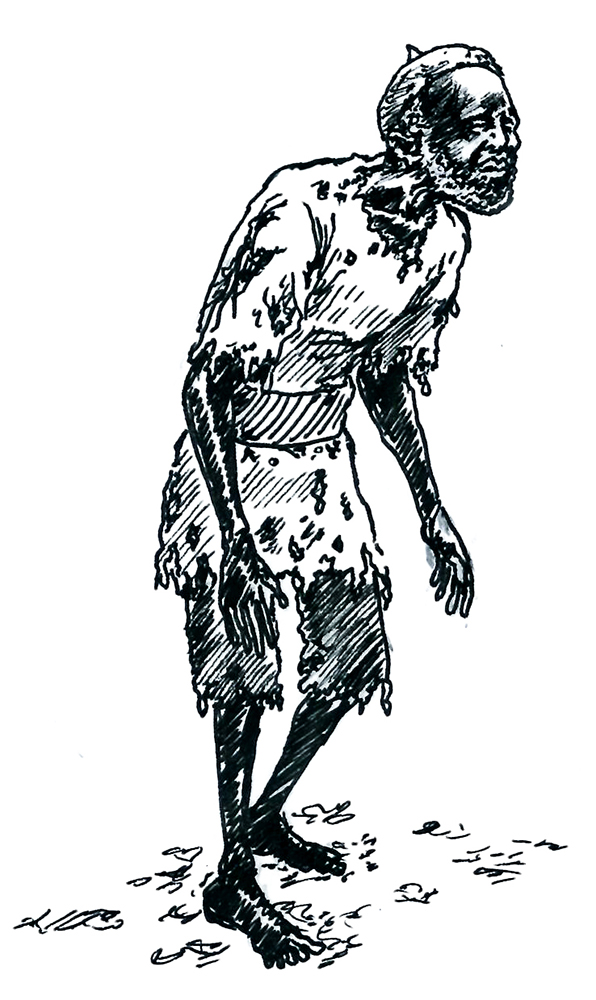
By Amado Alfadni
M’Barek Bouhchichi
Using different mediums such as paint, sculpture and drawing through what could be described as conceptual materialism M'barek Bouhchichi dismantles and re-imagines the contradictions embedded in contemporary grand narratives. His artistic practice nests in the intersection between aesthetics and social insight exploring its combinations as opportunities for the re-writing of personal experiences. By shedding new light on activities and patterns traditionally associated with blacks in the Moroccan south, M’barek Bouhchichi symbolically unsettles the existing divisions of space and labor. He samples social observations and converts them into physical forms. Bouhchichi’s work displays a belief in matter - earth, soil, wood, metal – a belief that matter in its quality of presence and its shape-shiftiness holding a potential for redemption.
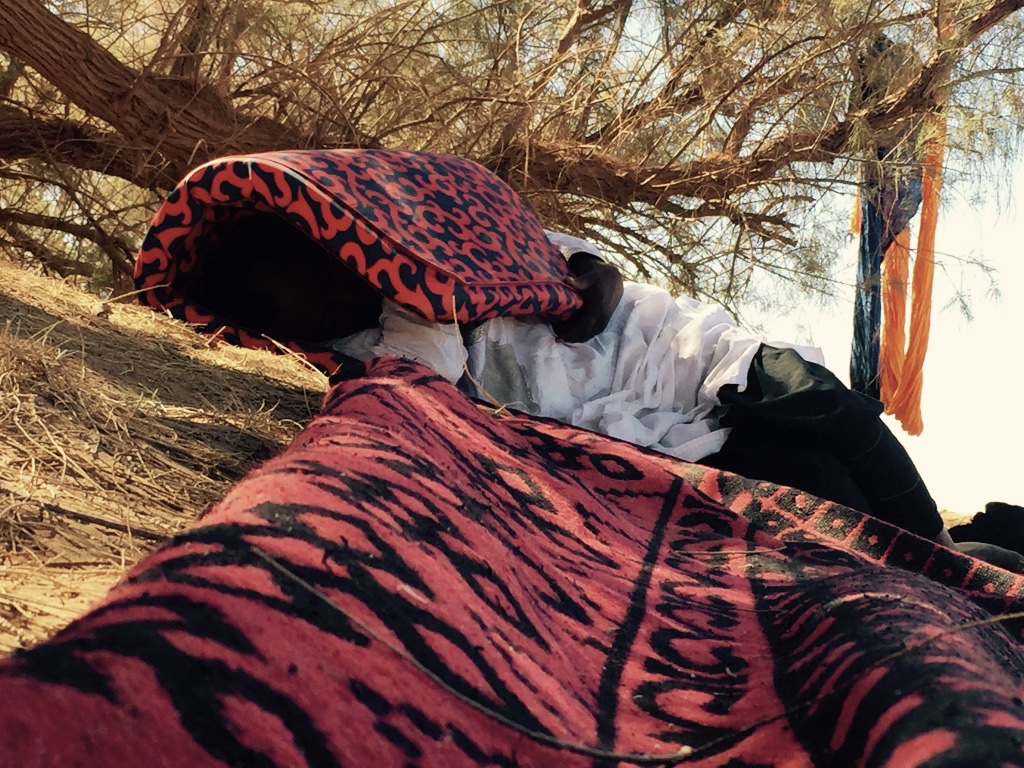
I walk, I re-walk
I walk, I re-walk, surveying a territory I had never explored before. I expected to live in a secondary state, at best a melancholic one. Nonetheless, my memory rapidly rectifies me, reminding me of emotions and memories I thought forever buried in my self recesses. It is just, and simply, by moving in it, as a kid learning how to walk and finding an indescribable pleasure in speeding up, one foot after the other, just because of the pleasure of feeling finally alive, free from any tutelage, from any right of its own gaze. Free to commit those childish follies age prohibits and that by simply being in open air suddenly brings us to reenact. This space, with its infinite stretch never left me. I haven’t been able to get rid of it. Where does this feeling of exile and abandonment, secretly nourishing me as a remorse, come from? Is this feeling that, in spite of myself, pushes me to represent this space? That puts myself in intimate relationship towards it by furnishing it not so much with artifacts, but with stunt ideas, dreams and reminiscences? In the presence of the desert, a crazy envy invades me, unveiling and discovering myself through my own eyes, bringing me to all possible states of mind. The genes of nomadism born again within, it directs me to the pastoral paths my ancestors certainly walked, except that instead of rare commodities, my caravan discharges ideas, emotions and sentiments all over the place. Through it I rediscover the primary vocation of man: being in eternal movement and stopping only to share fears, hopes and and questions.
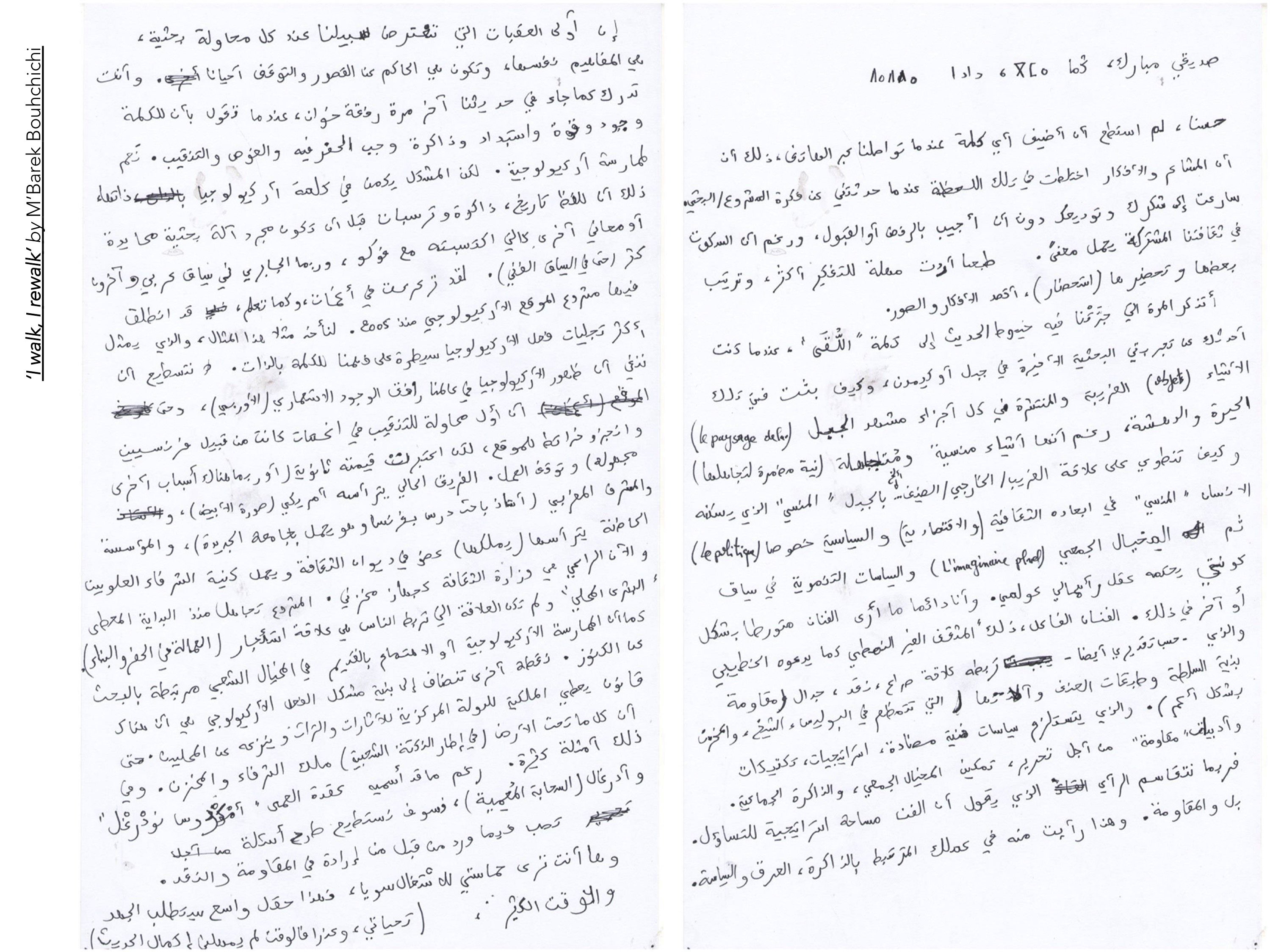
By M’Barek Bouhchichi
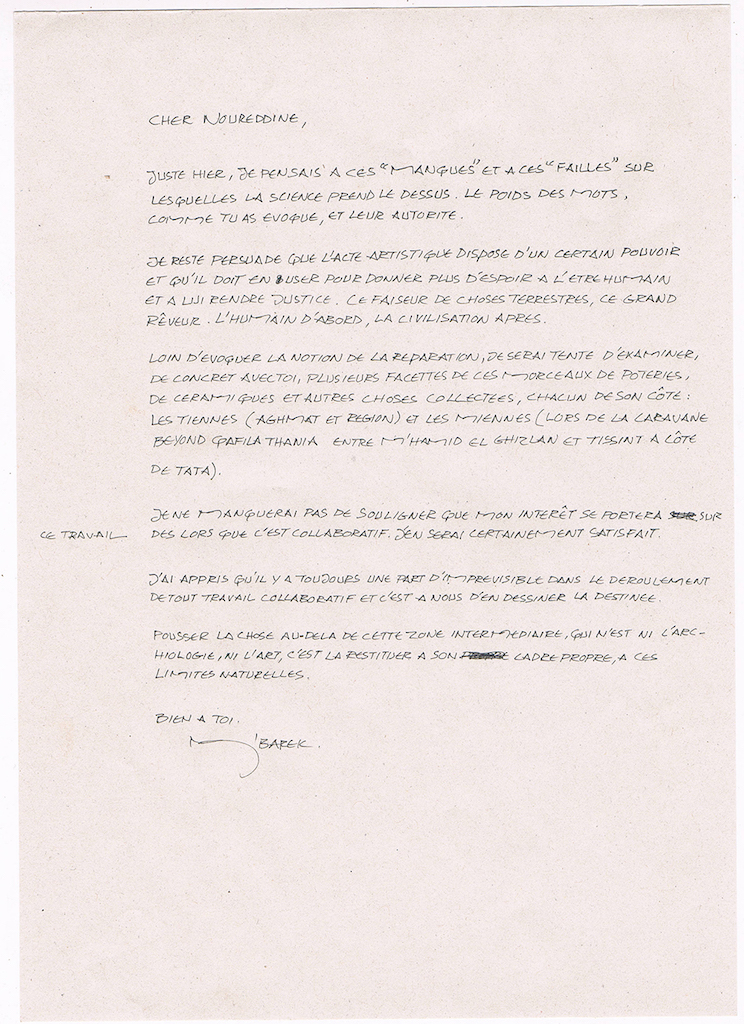
M’Barek Bouhchichi
Heidi Vogels
Heidi Vogels is an artist, filmmaker and organizer, based in Amsterdam. In her artistic work she applies photography, film and other forms of research by seeking to redefine the outlook on our day-to-day reality and surroundings. By engaging in projects within a certain place or context for a longer period of time, she constructs an intimate ‘world’ of relations between thought, encounters and situations. Hence rooted in a solid conceptual basis, her work consists of multi-layered stories, shifting between the domains of art, cinema and theory. Since 2011 she works in Fez, Morocco - a research and film project about the space of the garden and pursues further steps in her work to open up the garden as a productive concept.
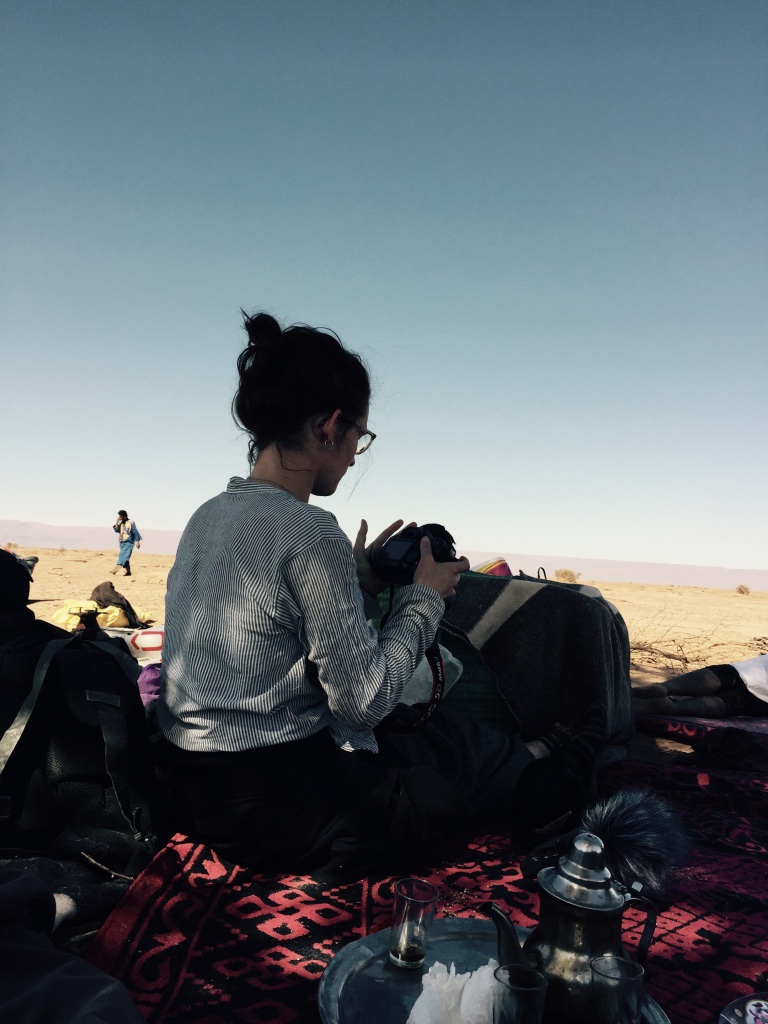
‘Instances of a landscape’ by Heidi Vogels

By Heidi Vogels
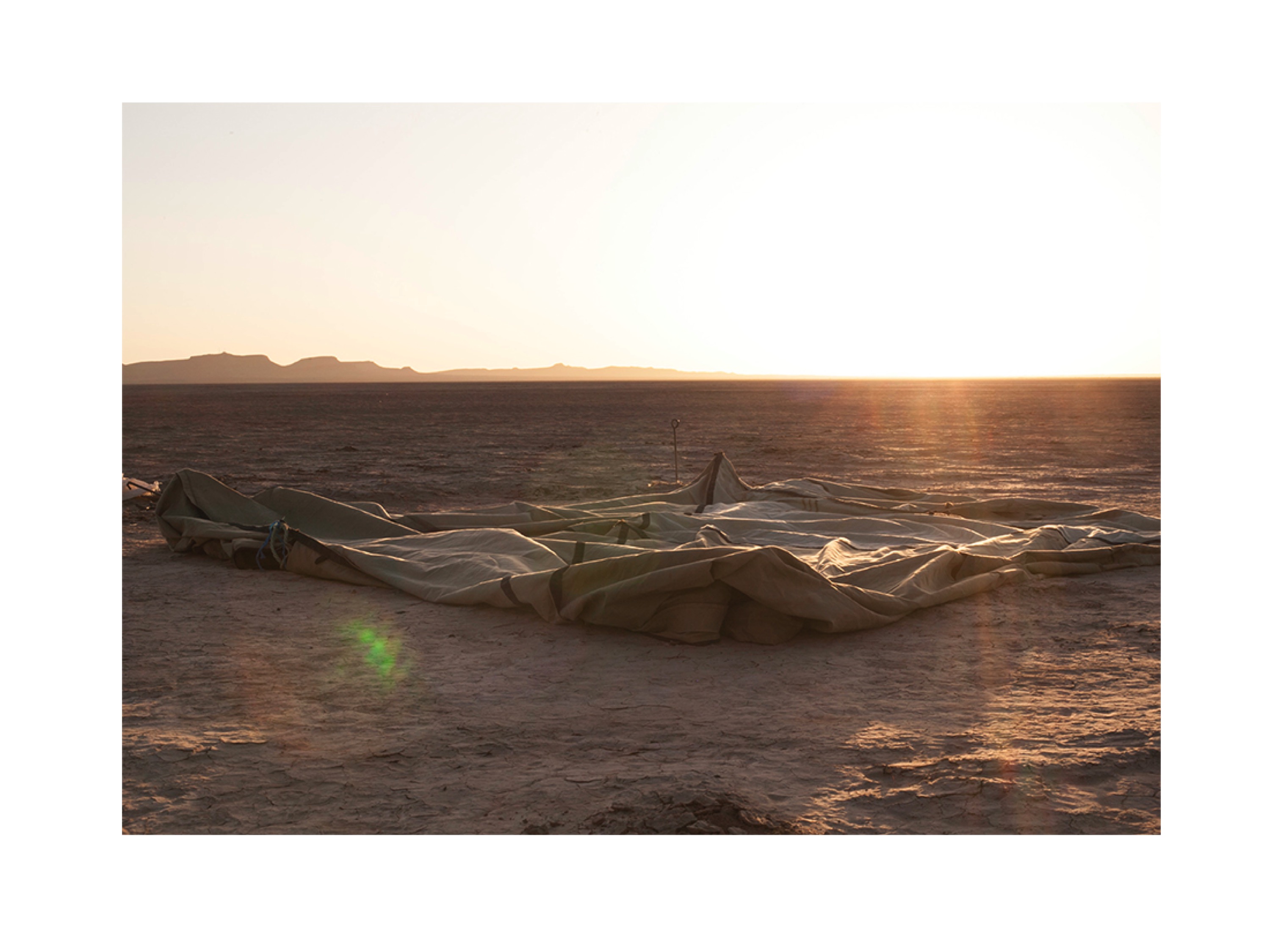
By Heidi Vogels
Pau Catà
Pau Catà is a cultural researcher and independent curator based in Barcelona. He completed his degree in Contemporary History by the University of Barcelona in 2004. That same year he moved to London to work at The British Museum and the White Cube Gallery while completing his MA in Critical Arts Management and Media Cultural Studies by LSBU. Since 2009 he is the founder director of CeRCCa, Center for Research and Creativity Casamarles, an artists in residence and research center in his hometown at the Barcelona’s countryside. As part of his job he has been involved in numerous research projects in the field of artists mobility and artists in residence programs. He is currently co-coordinator of NACMM - North Africa Cultural Mobility Map, Platform HARAKAT and KIBRIT and PhD candidate in Art Research at University of Edinburgh. His research field deals with epistemological resonances, decolonial duality and the mobility of bodies, knowledges and practices focusing on the southern Mediterranean as area of study.
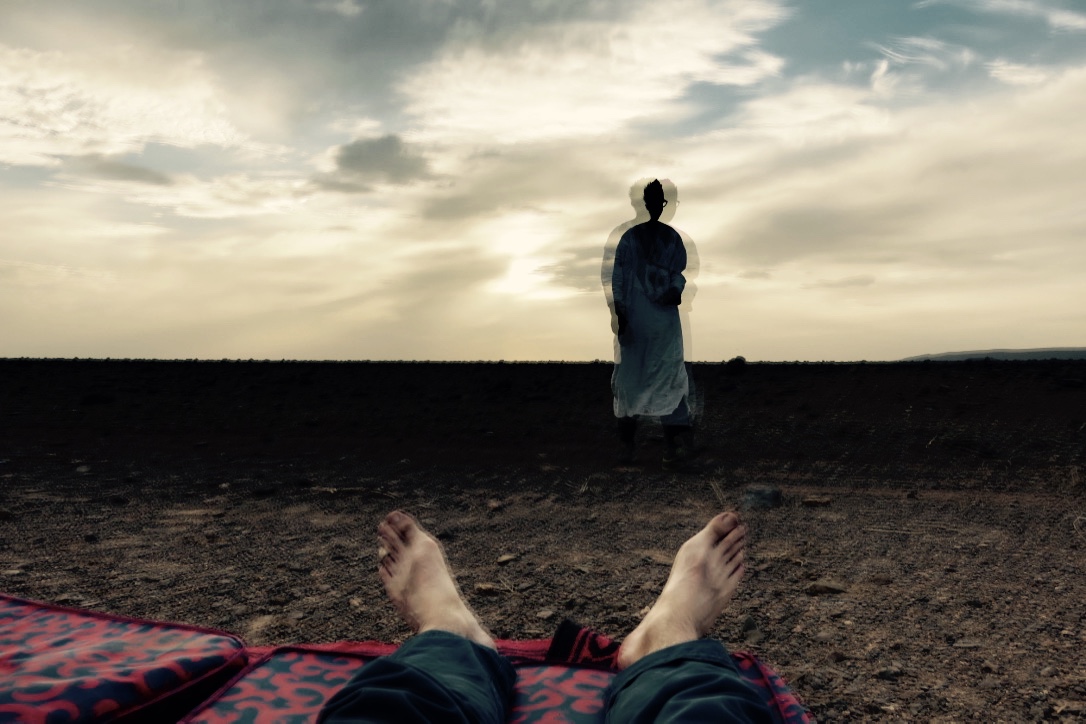
‘The impossibility of perception’ by Pau Catà
02/11/17
The impossibility of perceiving is already a perception. The impossibility of perceiving the desert, this landscape, Its components and functioning, Its already a perception.
The signs are to be found in its traces: The remaining fragments, the fragmented remains, its bones. The dried branches, big and small, growing from nowhere, everywhere, impossible to perceive remain invisible besides their shadows: Thin black lines traced on the hot sand or the cracking land conforming new lives and phantasmagorias move almost impossibly with the giant orbit of the sun, tracing daily circles, no one witnessing the lonely halaqahs.
Movement is perceived through its traces. Cockroaches, snakes, little birds and reptiles leave their testimony: intricate, subtle, repetitive logarithms of life, impossible to perceive, erased everyday through the persistent action of the Saharan winds that slowly displace the particles of sand, moving silently the huge dunes. And the skeletons, the fossils, the bones of history of millions of years and yesterday, spread along half buried or totally exposed, tell us about the fragility of life, impossible to perceive, of meteors, ancestors, peoples: constellations of feelings lost forever live within.
The impossibility of perceiving is already a perception. Its signs are to be found in its traces: The remaining fragments, the fragmented remains, its bones.
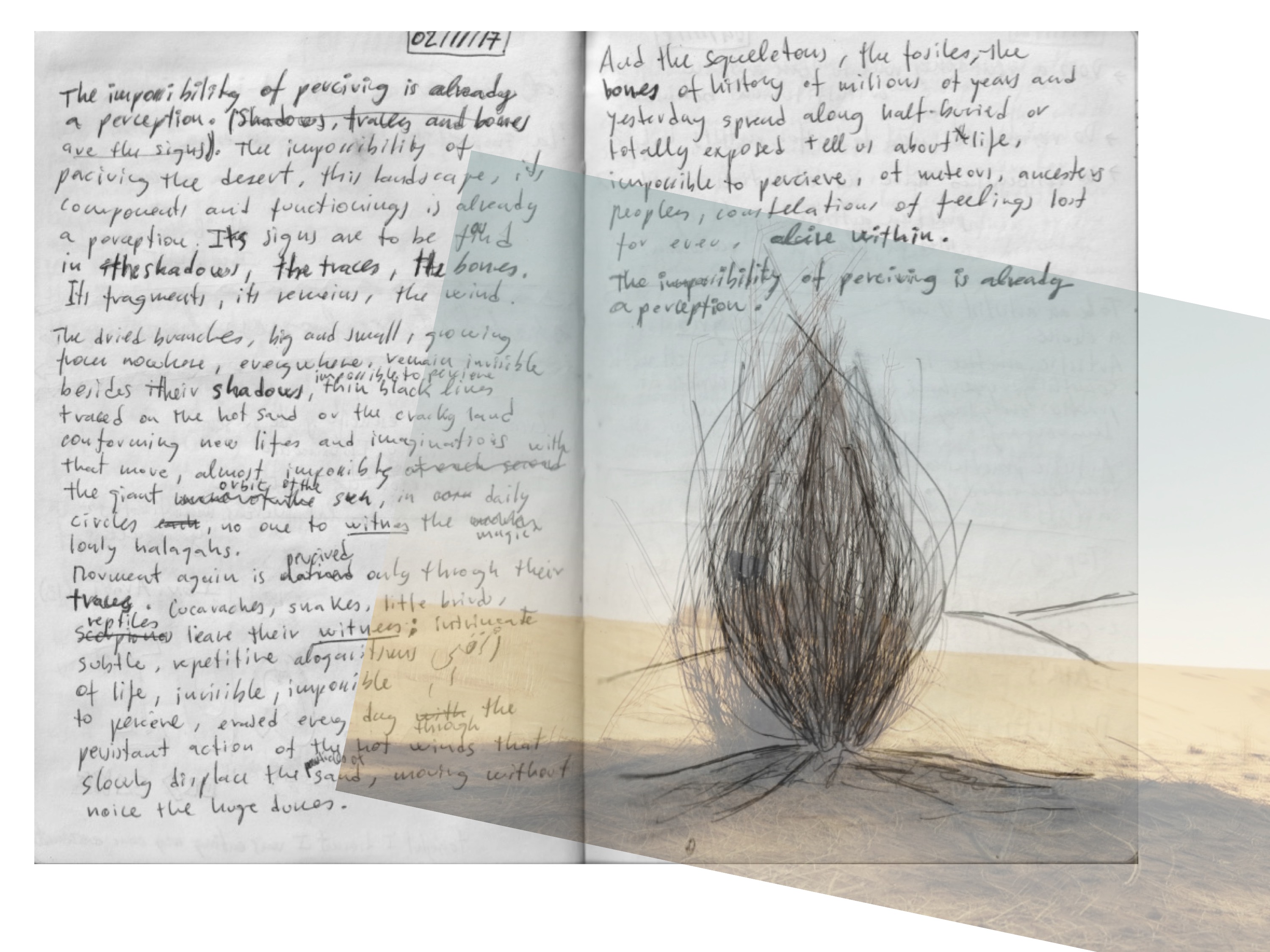
Carlos Perez
Carlos Perez is graduated from the Architecture School in Seville (Spain) in 1997, he founded his own office based in Ceuta where he has developed projects on urban planning, landscape, housing, culture, civil engineering, education and heritage. In 2013 he founded Marsad Drâa, an observatory for Moroccan desert regions, researching on heritage, architecture, urban planning, energy efficiency, desertification, contemporary art and anthropology. As part of Marsad Drâa since 2015 he co-organizes Caravane Tighmert, a contemporary creation laboratory for oasian cultures. He has been Assistant Professor at the National School of Architecture (2010-2013) and at the National Institut of Fine Arts (2017) in Tetouan.
‘Photo diary’ by Carlos Perez
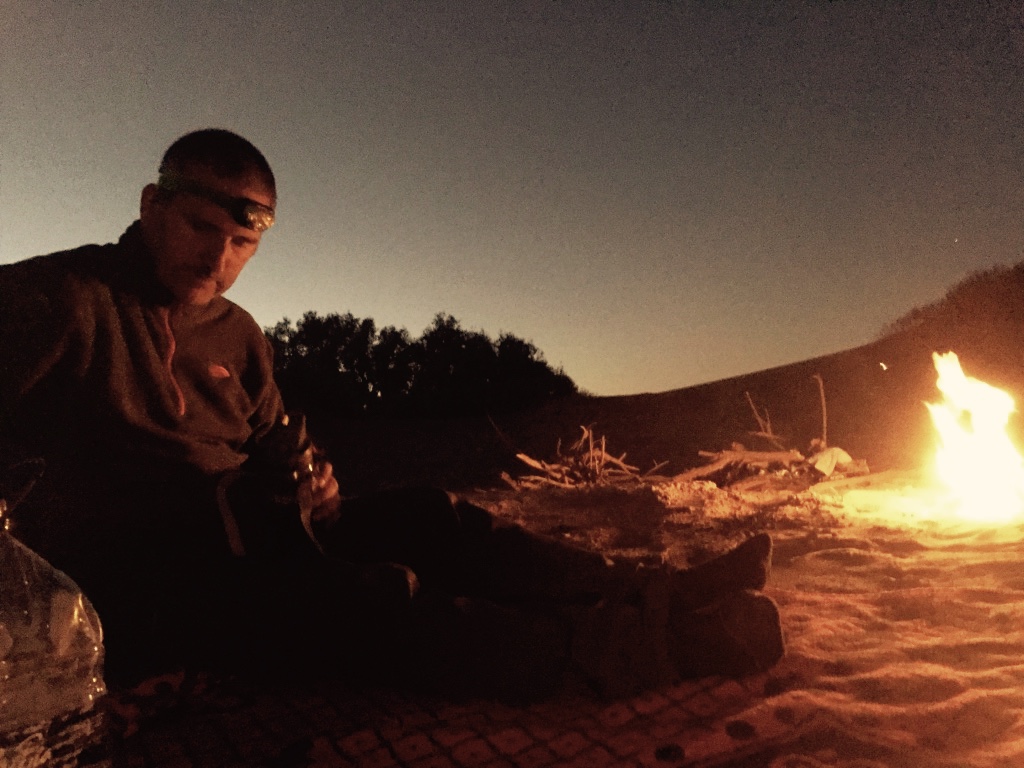
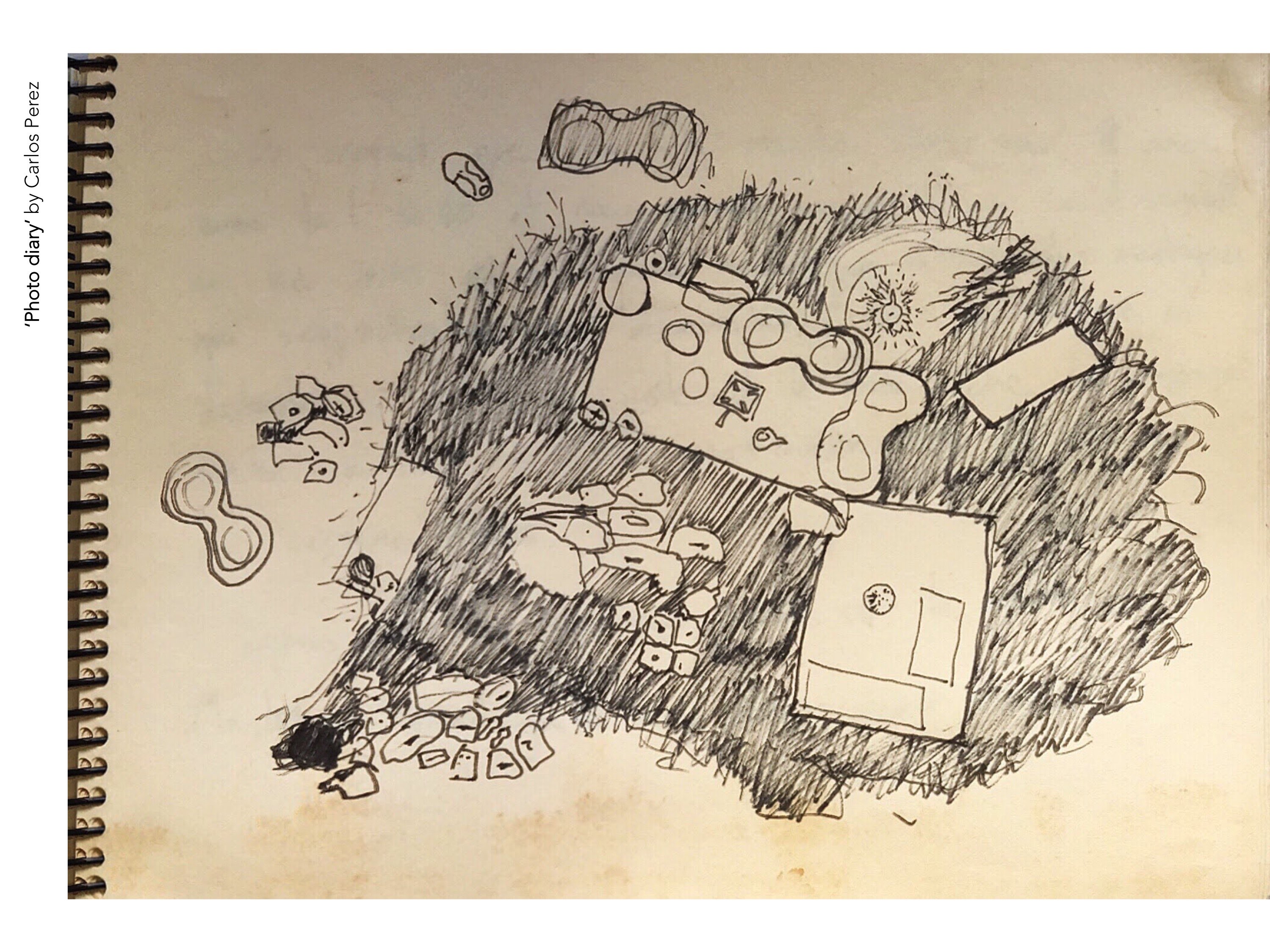
Carlos Perez
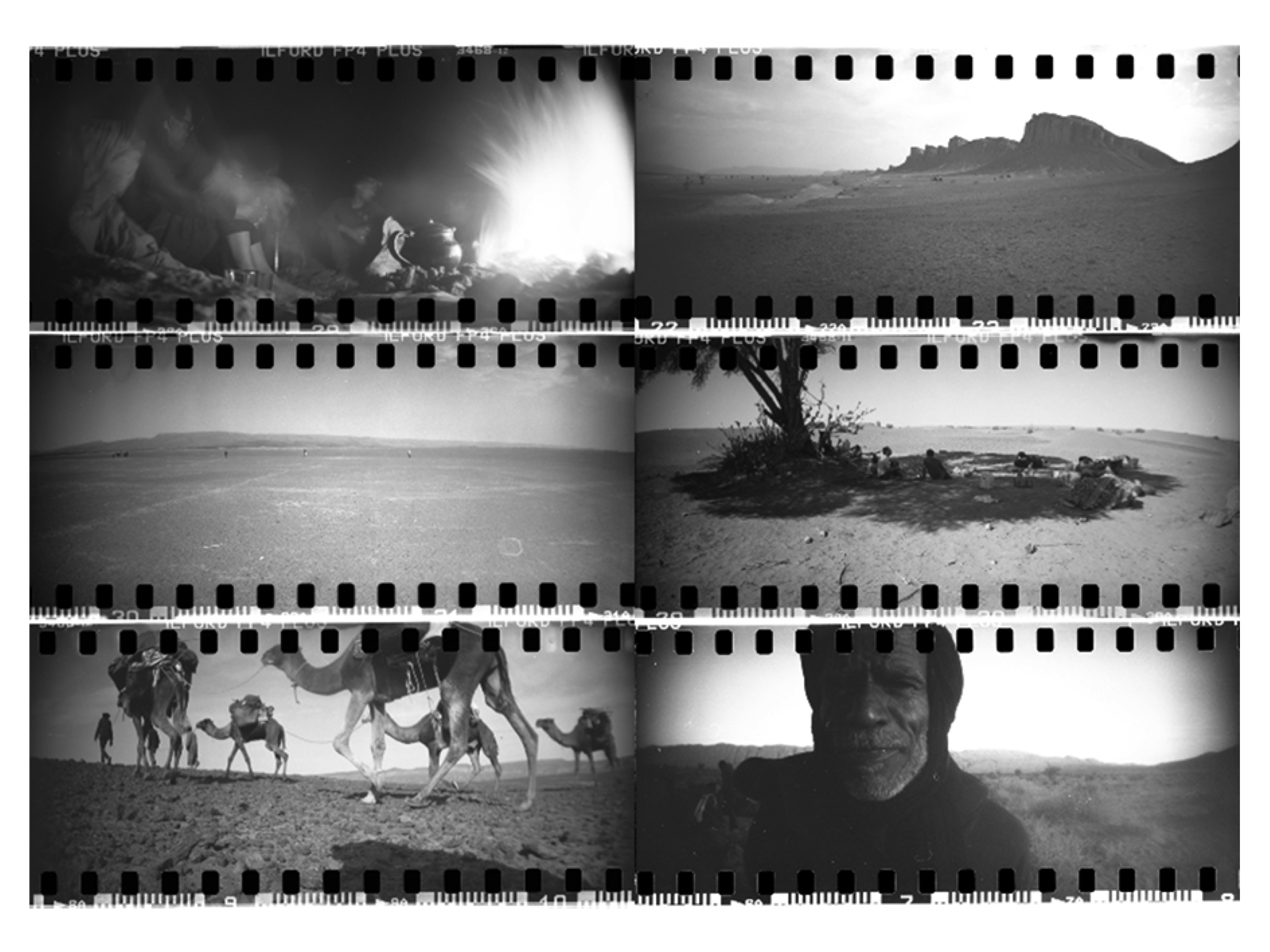
Carlos Perez
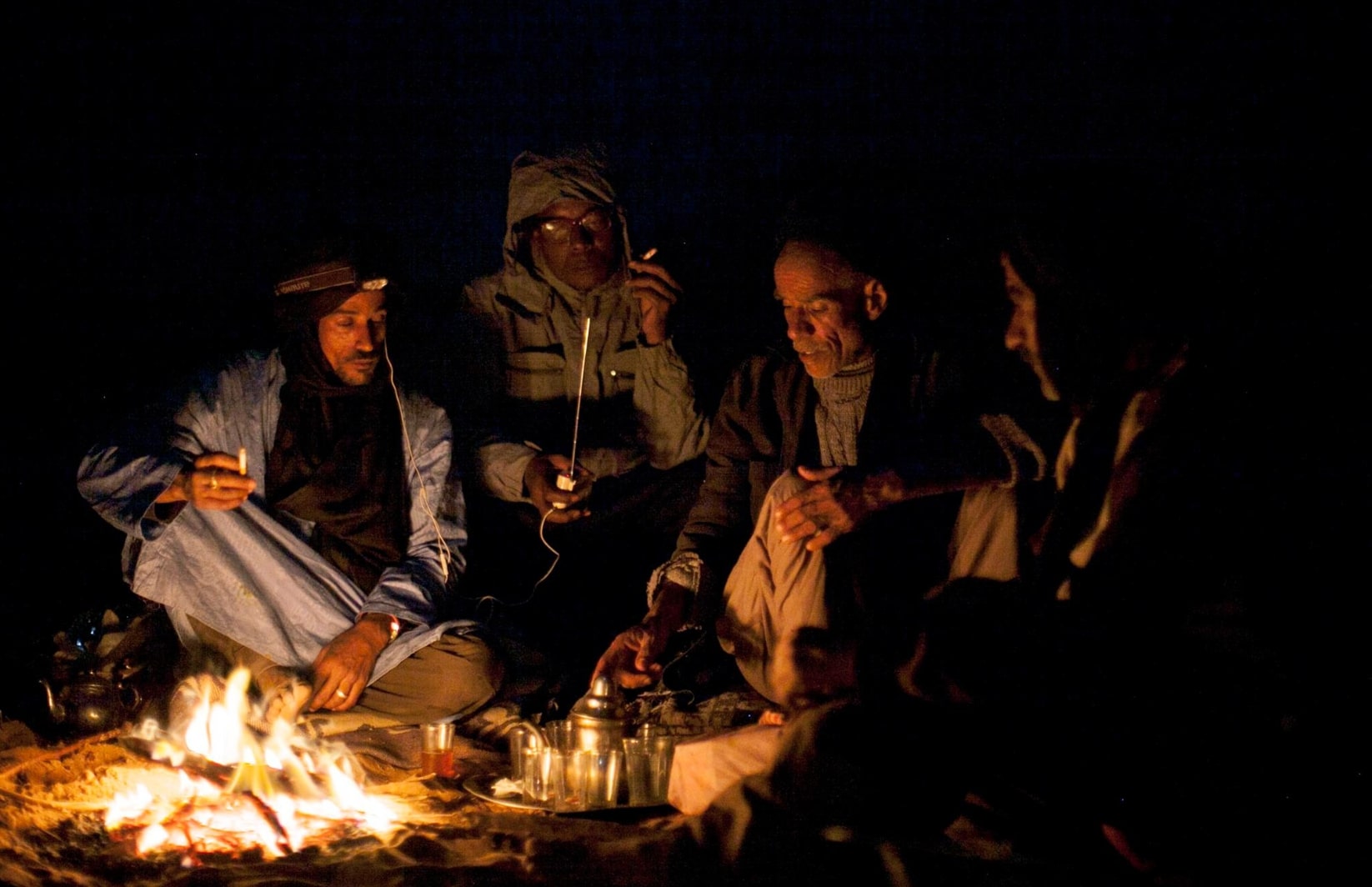
Beyond Qafila Thania would not have been possible without the support of the SGSAH and South Med CV and Le18 and the guidance of Said, Mohammed, Sjeigh and Abdu. More information about the project can be found in the following links:
http://projectqafila.weebly.com/beyond-qafila-thania.html
http://platformharakat.com/actions/beyond-qafila-thania
All images by Pau Catà except those with authors' name in the caption.
